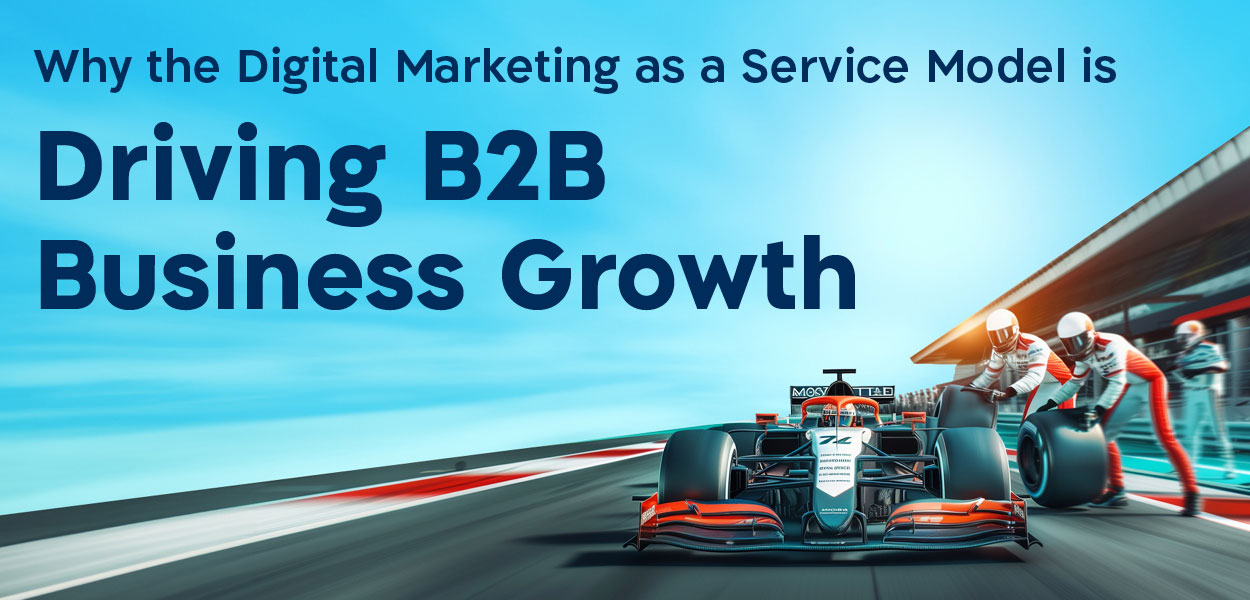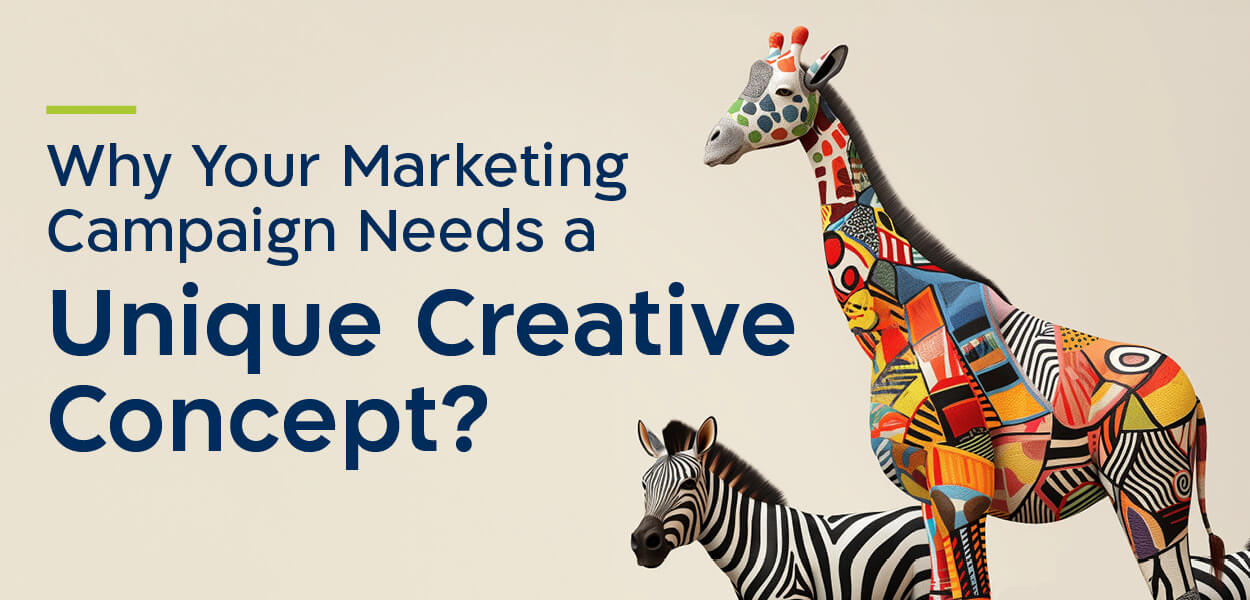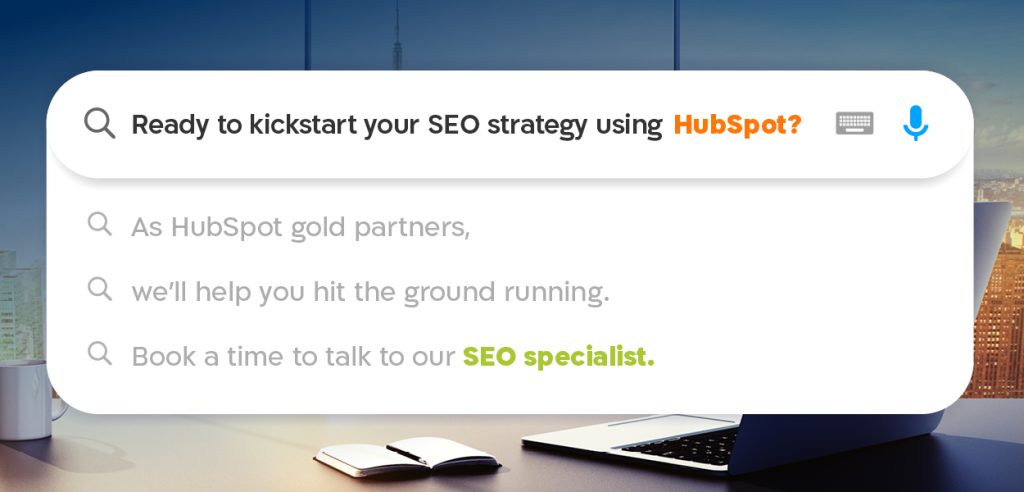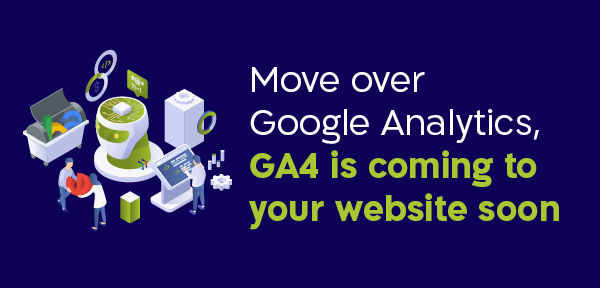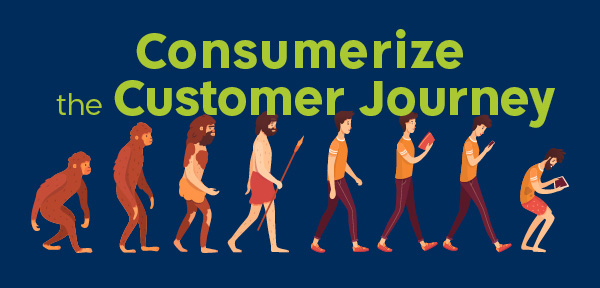The BL[OZ]
Even Great Content Can Miss the Mark and How a Strategy Pause Can Make All the Difference
By
Liron Ramot
, 22/09/2024
Digital marketing is essential for B2B companies to reach their target audience, generate leads, and stay competitive. Many lack the resources to handle it in-house, making outsourced digital marketing a valuable solution.
Why Often Misses the Mark?
Creating digital content that truly connects with your audience is no small feat. The landscape is crowded, the competition is intense, and audiences are more critical than ever. While many businesses pour resources into content creation, they find that their efforts do not translate into engagement or conversions. Most of the time, it's just a lack of alignment between content and the organization's overall business goals. Without a clear, strategic framework, content can become scattered, inconsistent, and ultimately ineffective. This is exactly why companies should consider stepping back to take a broader view. Rather than rushing ahead with the next campaign or content piece, a strategic pause to reassess and realign can be incredibly valuable. This is the essence of the discovery and study processes, a strategic approach that will build a solid foundation for your digital marketing campaign.
Understanding the Study Process
The primary aim of the Study process is to provide a focused analysis of your current digital marketing efforts. It’s about taking a step back and evaluating what’s working and what isn’t, allowing for strategic adjustments that enhance performance. This process is ideal for annual strategy reviews, specific campaign assessments, or when there’s a need to refresh the approach to your digital marketing.What It Achieves?
The Study process delivers actionable insights that help fine-tune your digital strategy. By concentrating on specific areas, such as target audience engagement, campaign effectiveness, or digital content performance, the Study process allows businesses to make data-driven decisions that improve ROI. It helps you understand where your content may be falling short and offers concrete steps to address these issues.How It’s Done?
- Initial Consultation: In-depth session to clarify your business’s current digital marketing objectives and identify the key areas that require attention.
- Targeted Research: Assessing the performance of specific campaigns, audience engagement metrics, and the effectiveness of your content in driving desired outcomes.
- Strategy Refinement: Adjust and optimize existing strategies based on findings.
- Implementation and Monitoring: Monitoring and tweaking the revised strategy as needed.

Exploring the Discovery Process
The Discovery process offers a broader, more comprehensive approach to digital strategy development. It’s designed for businesses that are launching new brands, undergoing a rebrand, or expanding into new markets. The Discovery process is about building a solid strategy that aligns with long-term business goals and keeps consistency across all digital channels. The Discovery process offers a deep dive into your brand’s identity, your market, and your audience. It provides a holistic understanding of your brand’s digital landscape. It uncovers opportunities for differentiation, identifies potential challenges, and sets a strategic direction that makes sure all digital efforts are aligned with your overarching business goals. One of the unique offerings of the Discovery process is the development of a visual language for your digital activities. This component ensures that your brand communicates consistently and effectively across all platforms, enhancing brand recognition and coherence, which is not typically included in the Study process. The goal is to develop a strategy that meets immediate needs as well as positions your brand for long-term success. This process is particularly beneficial for companies preparing for major changes, such as a new brand launch or market expansion.How It’s Done?
- Kick-off Meeting: Clarify goals and challenges.
- Comprehensive Research and Analysis: A thorough examination of the market, competitors, and internal capabilities. Key activities include identifying Buyer Personas, conducting a Competitive Digital Analysis, and performing a detailed SEO review.
- Digital Strategy Development: Based on the research insights, a full-scale digital strategy is formulated. This includes defining content pillars, creating a media plan, and developing creative visual guidelines that ensure brand consistency across all platforms.
- Presentation and Implementation: Once approved, the strategy is implemented, with ongoing support to ensure its success.

Why Discovery Is the Better Choice?
While both the Study and Discovery processes offer valuable insights and strategic direction, the Discovery process stands out as the more comprehensive and long-term solution. Here’s why Discovery might be the better choice for most businesses: Long-Term Strategic Value Discover aims to build a digital strategy that will serve your business for years to come, not just address immediate needs. By conducting thorough research and analysis, the Discovery process helps you create a strong, adaptable strategy that can evolve with your business. This long-term focus is particularly valuable in today’s fast-paced digital environment, where trends and technologies are constantly changing. Comprehensive Insights Unlike the Study process, which offers a more focused review, the Discovery process provides a holistic view of your digital strategy. This includes everything from a detailed SEO review to the development of creative visual language guidelines. These insights are crucial for making sure that all aspects of your digital presence. From content to design, everything is aligned with your brand's goals. Flexibility and Customization One of the key benefits of the Discovery process is its flexibility. The process can be adjusted to your specific needs - whether you’re launching a new product line, rebranding, entering a new market, or looking to create a unified visual identity for your campaigns. This customization helps make sure that your digital program is relevant, consistent, and effective. With the digital marketing arena being so fast-paced, it’s easy to get caught up in the rush to produce content and launch campaigns. Taking the time to reassess your digital strategy allows you to see what’s really working and where you might need to adjust course. It’s not simply about tweaking a campaign here or there, but rather making sure that every piece of content you create is connected to your broader goals and truly resonates with your audience. Whether you’re considering the focused approach of the Study process or the more comprehensive Discovery process, this strategic pause is crucial so your content doesn’t just reach your audience—it makes an impact.Rules, Regulations & Medical Brands How your medical brand can stand out within the regulatory framework
By
Nirit Elyovich, MBA
, 15/08/2024
Balancing marketing ambition with regulatory compliance is no easy task for medical brands. Our latest blog explores how early collaboration between marketing and regulatory teams can transform these challenges into opportunities, ensuring your brand stands out while staying compliant. Discover the smart strategies to help your brand shine within the regulatory framework.
When the journey takes an unexpected turn
During branding strategy kick-off meetings, we take a deep dive into your product, technology, and service. We’re looking for a fresh perspective, a promise not yet made, a story yet to be told. At this point, we get excited as we hear about groundbreaking technologies, solutions, and life-enhancing, life-prolonging products. Our jaws drop. With this WOW feeling, we continue the learning process in which we talk to customers, analyze the competition, and create a multi-participant meeting within the company to fine-tune its significant and differentiated strengths and generate outstanding benefits for its customers. As the process continues, we begin to understand the regulatory limitations. Suddenly, “Cinderella”, your extraordinary technology is being held back by regulatory limitations and is covered with “soot”.
Understanding limitations and optimizing capabilities
During the process, we’ve heard “It’s a given” or “It's powerful, but I can't confirm it" more times than we can count. Responses like these made us understand there must be a better way. That’s how our new module was born. It’s placed right at the beginning of the branding strategy process, which sets the stage for an open and guided dialogue between marketing and regulatory early on.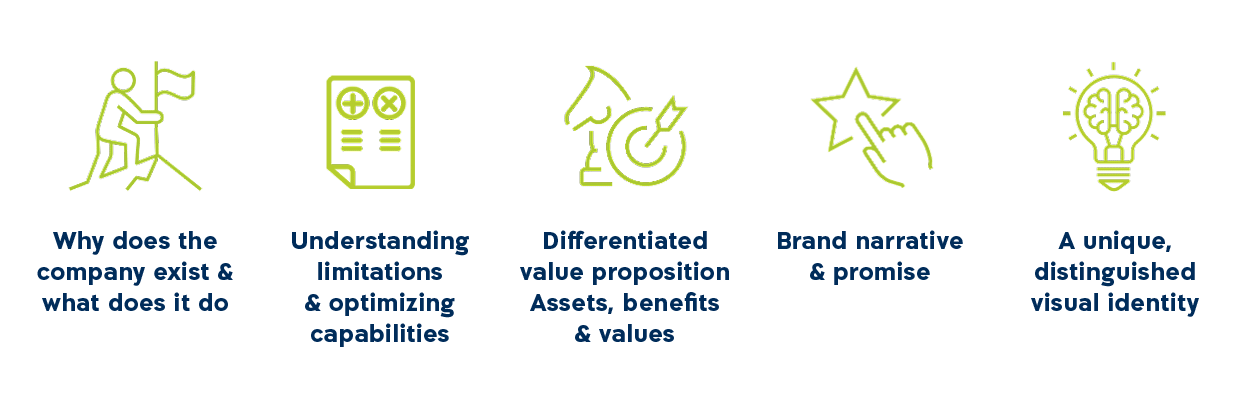
Challenging the norms
This dialogue is about helping the marketing team to understand the limitations in depth, and for the regulatory team to delve into the marketing team’s needs. It’s an authentic dialogue that creates a space to carry out activities that weren’t possible before. Understanding the precise needs opens up new perspectives and enables solutions within the boundaries of regulations. We understand the importance of compliance, but our experience shows that there are many degrees of freedom that are not being tested.It’s not about overstepping the bounds of the approved claims, but we also don’t want to take a step backward in the name of conservatism.
Sometimes it's a matter of overall wording, sometimes it's just changing one word. It's the little things that make a big difference. Stopping to ask questions often gives you a competitive advantage. Sometimes, there won’t be any flexibility in the claims you make, but at least you’ll know that you’ve turned over every stone.Structured and managed conflicts are an opportunity
Remember, whoever sits at the decision-making table wants the company to succeed and do the best they can. Inherently, conflict is not a negative; it can also be an opportunity. Don't let emotions run the process. As we often say, “Don’t be right, be smart!” As with every relationship where there’s an inherent conflict, there’s great value in professional guidance to create the conditions for a productive dialogue. To meet this need, we’ve created a special collaboration between OZ Global B2B and Leap, led by Moran Faibish, who has extensive experience in leading marketing in global medical companies. Moran has hands-on experience in bridging the gap between marketing and regulations to create deep and unique brand promises — promises that aren’t possible without providing an informed and professional framework that enables constructive communication.Play smart
The more we play smart within the regulatory limits to make the most of your claims, the more we can create a differentiated value proposition that more accurately reflects your breakthrough technology. This is how your brand will shine. We’ll be there every step of the way to guide the process, refine the messaging, and make sure your “WOW” comes through loud and clear. If you’ve nodded your head while reading this, it’s time for us to talk.


Why the Digital Marketing as a Service Model is Driving B2B Business Growth
By
Liron Ramot
, 17/06/2024
Digital marketing is essential for B2B companies to reach their target audience, generate leads, and stay competitive. Many lack the resources to handle it in-house, making outsourced digital marketing a valuable solution.
Digital Marketing as a Service (DMaaS) is a model that works
As an on-demand model, DMaaS allows your company to access a wide range of digital marketing expertise, tools, and resources without hiring and maintaining an in-house marketing team. While digital marketing toolboxes, tactics, and strategies differ according to client needs, they frequently comprise smart content, webinars, outreach and Account-Based Marketing (ABM), Search Engine Optimization (SEO), sponsored campaigns, and marketing automation to reach target audiences and drive traffic or conversions.4 great reasons why DMaaS makes sense for your B2B business
- Access top-tier talent without the overhead costs associated with traditional hires Budget constraints and HR challenges may be standing in the way of hiring an in-house digital marketing manager. DMaaS offers a cost-effective solution, allowing your company to alleviate the burden of recruitment, training, and retention, freeing up your resources to focus on your core business operations.
- Effectively navigate the complex digital landscape Tap into the expertise of seasoned professionals who possess a comprehensive understanding of digital marketing strategies, tactics, and execution skills that can help you achieve your marketing objectives.
- Adapt to changing market conditions Your business has to constantly adapt to market needs and business growth. DMaaS has built-in flexibility, allowing your business to scale up or down, based on your changing needs and budget.
- Set goals, measure results & change the game plan as needed In the dynamic world of digital, the goalposts are constantly changing. By setting key performance indicators (KPIs) and using accessible analytics tools such as those available in HubSpot, you can easily track the success of your marketing campaigns, optimize strategies as needed, and demonstrate the value of using DMaaS services.

Follow the yellow brick road
As a global B2B marketing expert, OZ has spent years building a strong reputation. Digital trends may come and go, but dedication, commitment to success, experience, and professionalism never go out of fashion. At OZ, we believe that long-lasting partnerships are based on deep listening, understanding, and transforming your goals into measurable results. That’s why many of our clients stay with us when they move companies, and why many clients come to us by word of mouth.Your dedicated digital account manager will be your work BFF
With OZ, your account will be managed by a dedicated digital account manager backed by a multidisciplinary team with expertise in every aspect of digital marketing, and more. Your OZ manager is always backed up by a team comprising a graphic designer, strategist, and content writer. Your OZ manager becomes an integral part of your marketing team, offering full commitment and dedication to your company's goals. It's not just one person, but an entire team of digital experts working behind the scenes to drive your digital marketing success. Every member of the OZ team brings with them a high standard of professionalism and expertise gained from working with numerous B2B companies across various industries.
Boost your bottom line
DMaaS enables you to reach and engage with your target audiences effectively, measure the success of your campaigns with precision, and adapt your strategies in real time based on insights and feedback. It’s there to act as a driving force in your marketing strategy, enabling you to access the resources and expertise required to enhance your brand visibility, attract and retain customers, and drive sustainable growth.The Forgotten Digital Frontier. Marketing Beyond the Booth.
By
Rosa Rabinovich
, 17/06/2024
Discover the power of integrating digital marketing with physical trade show presence to drive better engagement, increased traffic, and quality leads. Learn actionable strategies to make your next trade show a success.
How to amplify your tradeshow potential – a step-by-step guide
So, you've invested quite a bit in a stunning trade show booth. The team is buzzing with excitement expecting it to be the center of attention. Yet, when the day arrives, the anticipated crowds turn out to be rather scarce. When this happens, you've probably missed a key aspect of trade show preparation - not fully integrating digital marketing into your trade show strategy.The Challenge: Bridging the Gap to Maximize Potential
Too often, companies focus heavily on their booth's physical setup and ignore the digital engagement that goes with it. This oversight can lead to disappointing foot traffic, missed opportunities, poor engagement with potential customers, and a less effective exhibition as a whole.The Strategy: A Holistic Approach - Integrating Digital with Physical
Achieving trade show success means thinking beyond the booth. It involves a proactive approach before, during, and after the event to ensure all marketing efforts are harmoniously aligned to maximize your return on investment. Let's explore the steps you can take to make this happen:Laying the Groundwork: Pre-Show Essentials
Just as the booth and marketing materials are planned months in advance, your digital marketing strategy must follow suit. This helps make sure that every aspect of the exhibition strategy is aligned and optimized for maximum impact. Setting Goals Start by establishing clear objectives:- Increasing brand awareness by strategically utilizing your presence at the expo.
- Maximizing traffic to your exhibition booth
- Creating a database for ongoing engagement and nurturing
- Defining KPIs - Measuring performance and continuous improvement (eg. Number of campaign impressions, website or landing page visits, email open rate, event participation, and more)

During the Show: Capturing and Engaging
When the trade show is underway, keeping the energy high is crucial. Continuous updates, engaging social media posts and stories, interviews with keynote speakers, and live interactions help keep up the excitement and draw attention and visitors to your booth. You might also want to consider adding interactive presentations and videos that boost visitors' experience, leaving a lasting impression
Building Connections: Post-Show Follow-Up
The interaction doesn’t stop when the show ends the work is only just beginning. The focus now shifts from the show to leveraging the connections you've made. Now's the time to implement a structured follow-up process to keep your brand top of mind for future marketing opportunities. Design and implement targeted follow-up campaigns, using structured email marketing complemented by a strong social media presence to continuously nurture new contacts until they are ready to reach out to you. Last but not least, tracking the results of your campaigns and marketing activities is a must to measure their effectiveness and adjust them accordingly. Be sure that the initial contact was handled and nurtured, and answer customer questions as soon as possible. (more on that another time).Don’t Get Lost in the Scroll: Why Your Marketing Campaign Needs a Unique Creative Concept
By
Timrat Erez
, 20/05/2024
Unlock the potential of every marketing move with the right creative concept that distinguishes your campaigns from the day-to-day brand strategies.
Creative Cracking: The Art of Standing Out
Creative cracking refers to the process of developing a distinctive creative concept that adds a layer of uniqueness and power to your digital marketing campaigns. It's about breaking through the norm, providing a fresh perspective that draws attention and maintains it, and achieving a high rate of engagement. This process is like how different products under the same brand differentiate themselves through packaging. Similarly, each marketing move should encapsulate a distinct message and visual style that communicates its unique value proposition and resonates with specific target audiences. A successful marketing campaign must go beyond the typical visibility of the brand. It must be distinctive in its visual presentation and messaging. This requires a deep understanding of the product's features, qualities, and the demographics it aims to attract. By aligning these elements with a creative concept that pops, the campaign delivers its message with increased impact and memorability.When to Launch a Creative Concept?
So, how do you know when it's time to invest in a creative concept campaign? Here are a few key moments: • Launching a New Product: Generate excitement and buzz around your latest offering with a campaign that speaks directly to your target audience's needs and desires. • Entering a New Market: As you venture into uncharted territory, a creative concept campaign can help you build brand awareness and establish yourself as a leader in the new space, enhancing your brand recall. • Making a Big Announcement: Whether it's a shift in your industry focus or a strategic partnership, a creative campaign can add weight and memorability to your message.From Insights to Impact: Our Creative Concept Process
At Oz Global, we understand the power of storytelling real-time marketing. We take a data-driven approach to developing creative concepts, working closely with you to understand your specific needs, target audience, and brand voice. Here's how we do it - Laying the Groundwork: Gathering Information and Formulating Ideas Our approach begins with gathering comprehensive information about your business objectives, the competitive landscape, and your target audience's preferences. This phase is crucial as it lays the groundwork for crafting marketing moves that are not only creative but also strategically aligned with your business goals. Visuals and Messages that Speak Volumes With a clear understanding of your marketing goals and audience insights, we move ahead to shape the visual and narrative elements of your campaign. This involves selecting colors, typography, and imagery that align with the brand's identity while introducing something new and exciting. Continually experimenting and testing directions, before zooming in, selecting, and finetuning the winning concept. And a new creative direction (or two) is born. Concept Ideas: The Survival of the "Fittest" Once you choose the path that best aligns with your vision, we'll get working on crafting an engaging campaign that extends across your channels. From a captivating landing page to eye-catching social media banners, every touchpoint will, from this moment on, speak the same creative language, cementing your brand identity, generating buzz, and driving high-rate engagement. Bringing Creative Concepts to Life After finalizing the design, we bring the creative concept to life across various platforms and touchpoints. Whether it's digital ads, social media content, or physical marketing materials, every element is designed to reflect the unified creative concept, ensuring consistency and boosting brand recall.Why Creative Concepts are Marketing Gold
To break through the noise and engage professional audiences effectively in B2B marketing, creative concepts are a must. With innovative marketing strategies, that tap into your audience's emotions (emotional appeal), a standard product launch can turn into a compelling business story that lands on the desks of decision-makers. Creative concepts help to raise the perceived value of a product or service and build meaningful connections with your customers, driving conversions and strengthening long-term partnerships. By prioritizing creativity, B2B companies can make sure their marketing efforts are seen, remembered, and acted upon. And don't forget the power of a clear call to action (CTA) during a targeted product or service marketing campaign! Whether it's encouraging a visit to your dedicated landing page, downloading your white paper, or signing up for an upcoming webinar, a strong CTA will ensure your audience knows exactly what you want them to do next.Your Story, Amplified
Employing a unique creative concept does more than just attract attention, it amps up all your marketing efforts, by - - Standing out: It separates your campaign marketing moves from your ongoing brand marketing programs, helping your campaign stand out. - Boosting Engagement: Adding visually appealing and message-oriented concepts helps make a campaign more memorable and engaging. - Building Long-term Brand Recall: Just as unique packaging can make products memorable, unique creative concepts can help marketing moves linger in the minds of consumers, helping to achieve long-term brand recall.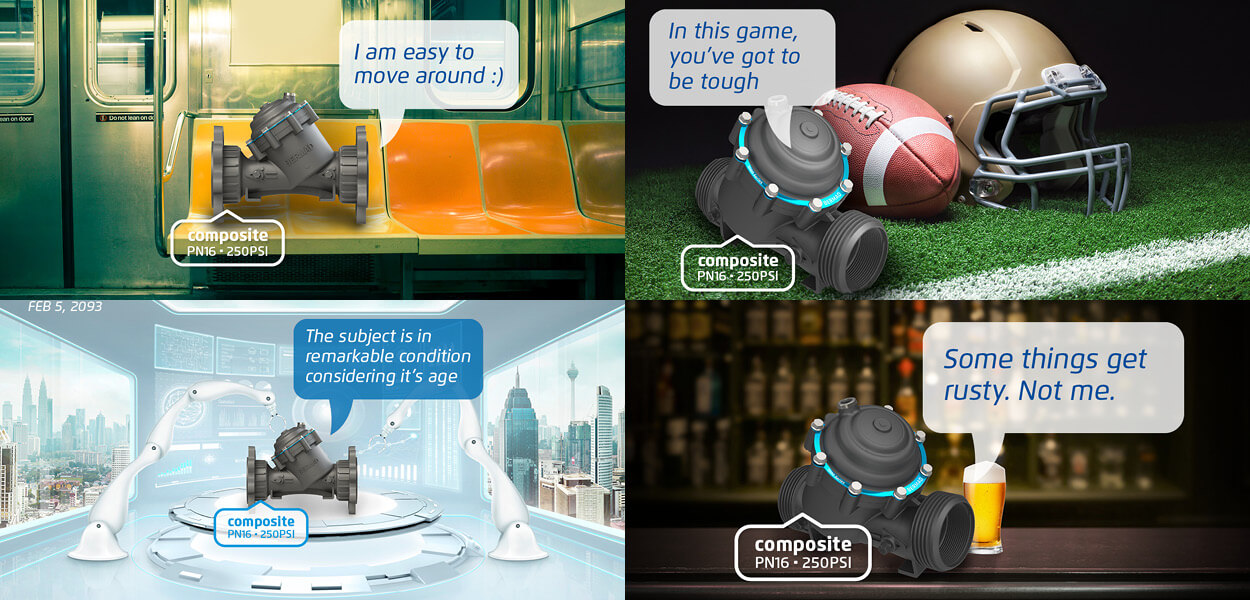
A Final Thought
For a marketing move to be successful, it needs a strong creative element. In the same way that different products of the same brand thrive in unique packaging, each marketing campaign needs its own creative concept to make sure it speaks directly and powerfully to the target audience. Not only does it boost visibility, it leaves a lasting impression. So, are you ready to break free from the monotonous scroll and make a lasting impact? Let us help you develop a creative concept campaign that gets noticed, remembered, and drives real results.Is HubSpot’s Content Hub the MVP of Your Content Marketing Team?
By
Mayrav Galor
, 05/05/2024
Constantly creating high-value content is a neverending story — there’s always a new chapter to write. Having created a piece of content, it needs to be repurposed into different media for different marketing channels
A content marketer’s job is never done
Constantly creating high-value content is a neverending story — there’s always a new chapter to write. Having created a piece of content, it needs to be repurposed into different media for different marketing channels. It also needs to be managed – the performance of every piece of content needs to be tracked, to see how it’s performing, draw informed conclusions, and new content created that delivers even better results.The quest for great content
The new hero in the marketer’s quest to create and manage memorable content is Content Hub. It’s the all-in-one AI-powered content marketing software in HubSpot that will help you devise and deliver content to fuel the entire customer journey. As a content specialist, you may already be cringing. Are you about to be made obsolete? Absolutely not! While Content Hub is an exceptionally powerful platform, it’s there to empower you. It requires savvy marketers to make it work to its full capabilities – which ultimately will make your life a lot simpler and help you focus on being creative. Before you roll your eyes, we highly recommend you give it a test run. Trust us, you’ll be pleasantly surprised.What can Content Hub do for you?
In a nutshell, it can help you gear up your marketing strategy and put it into action. You can run and monitor every aspect of your marketing campaigns — creating everything from blog posts, emails, social posts, and more. Let’s dive in and take a look at the key feat- AI blog post generator- based on your description of what your blog is about and keywords, it creates a list of editable titles, together with monthly search volume (MSV), difficulty to rank, and keyword intents. Once you’ve selected the title you want, it provides a blog post outline. You have complete flexibility to add paragraph headings, remove those you don’t want, and add talking points. From there, it generates an entire blog ready for you to edit. Here’s when you put your mark on the copy, ensuring it’s on message and speaks your brand’s language. HubSpot is way ahead of you, providing a tool that allows you to define your brand voice using past writing samples. Once you’ve edited the blog to your satisfaction, you can preview it before publishing it. But wait, you need an image!
- AI image generator- simply describe the image you want (e.g. a steaming cup of hot coffee sitting on an office desk with a pair of spectacles beside it), decide on a style, and hit generate. Now, you can crop and edit your royalty-free image in the correct ratio for your blog posts, landing pages, marketing emails, and social posts.
- Blog post narration- with this handy feature, you can easily create audio from your blog content, customizing the tone and human voice before adding it to your blog or using it for different channels.
- AI language translation- translate your blog into multiple languages with a click. Voilà! Votre traduction est prête.
Drum roll, please! Killer feature coming up
Probably the most exciting tool in the Content Hub toolbox is Content Remix, which allows you to repurpose your content for multiple channels and formats in just a few clicks. Blink and it’s done. Here too, your sharp eye, copywriting chops, and editing muscles will come into play as you tweak the content until it’s just right.But that’s not all…
Much like the shopping channel, there really is more! You can also create podcasts, smart content, landing pages and forms, CTAs, chatbots, and live chat. With HubSpot’s App Marketplace, you can create video content, engaging web experiences, and compelling design assets.What happens the day after you unleash your content to the world?
You can easily track the performance of every piece of content you create, so you can leverage what’s working and drop what’s not.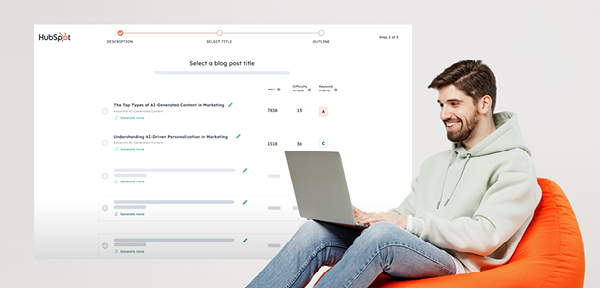
MVP or VIP?
That brings us back to our original question: Is HubSpot's Content Hub the most valuable player of your content marketing team? Our experience shows that it can be a very important player greasing your content wheels —with you in the driver’s seat to define the strategy and goals, refine the messaging, customize it to your brand, and add those crucial finishing touches. It’s a valuable addition to the HubSpot platform that can simplify and streamline both the creation and management of your company’s content. Ready to give it a try? Ask our HubSpot expert for a demo.Unlock SEO Automated Success: Top 7 SEO Strategies You Can Automate with Make (Integromat)
By
Orly Gilad
, 07/03/2024
Are you overwhelmed by the relentless pace of digital marketing and the constant need for SEO optimization? Imagine if you could put some of those tasks on autopilot. That's where Make (formerly Integromat) comes into play, offering a way to supercharge your SEO strategies with automation. Let's delve into seven automation strategies that can not only save you precious time but also improve your website's standing in search engine results.
1. Competitor Analysis Automation
Imagine having a secret window into your competitors' strategies, giving you the upper hand. By automating the tracking of their blog updates, keyword usage, and SEO maneuvers, you're essentially doing just that. It's like playing a strategic game where you're always one move ahead, nimbly navigating through the ever-changing landscape of digital competition. For Example: Automatically tracking a competitor’s blog updates and keyword changes.How-to:
- Set Up Triggers: Use RSS feeds or webhooks to monitor competitor blogs or websites.
- Extract Key Data: Use Make scenarios to automatically extract new content details such as titles, keywords, and descriptions.
- Analyze Changes: Use SEO tools like SEMrush or Ahrefs to analyze any new keywords or strategies they're employing.
- Send Reports: Configure Make to send periodic reports with this data to your email or Slack.
2. Streamlined Local SEO Management
Streamlining your local SEO tasks, like keeping Google My Business listings up to date and monitoring reviews, can make a big difference in how you rank locally. Automation takes the heavy lifting out of the equation, making sure your local presence is both accurate and compelling without constant manual oversight. For Example: Updating and monitoring Google My Business listings for multiple locations.How-to:
- Connect to Local SEO Tools: Integrate with tools like Moz Local or Yext.
- Automate Updates: Set up processes to automatically update listings with new hours, photos, or responses to reviews.
- Monitor Reviews: Get alerts for new reviews to respond quickly.
- Reporting: Generate regular reports on listing performance and local search rankings.
3. Image Optimization on Auto-Pilot
Automating the optimization of images on your website can significantly boost page performance. Faster loading times not only enhance the user experience—a key SEO factor—but also free up your time to focus on other aspects of your website. For example: Automatically optimizing images uploaded to your CMS. What can I do?- Monitor New Uploads: Set up a trigger for when new images are uploaded to your CMS.
- Connect to an Image Optimization Tool: Use services like TinyPNG or Kraken.io within Make.
- Optimize and Replace: Automatically optimize the images and replace the originals with the optimized versions on your site.
4. Efficient Content Research - Capitalize on Trending Topics
Automating your content research can keep you ahead of the curve. By pulling in trending topics from social media and news outlets, you can craft content that truly speaks to your audience and attracts more visitors, all while saving time on manual research. For Example: Gathering trending topics from social media and news feeds. What can I do?- Set Up Social Media Triggers: Monitor keywords and hashtags on platforms like Twitter or Reddit.
- Integrate with News Aggregators: Use tools like Feedly to pull in trending topics.
- Collect and Analyze Data: Aggregate this data for analysis to identify popular subjects.
- Generate Content Ideas: Use this data to inform your content creation strategy.
5. Automated SERP Analysis - Monitor Your Keyword Success
Automated SERP analysis allows you to monitor your keyword rankings effortlessly. This ongoing oversight offers crucial insights, enabling you to tweak and enhance your SEO strategies for better results, without the need for constant manual checks. For Example - Monitoring search engine result pages for selected keywords.What can I do?
- Use SEO Tools: Integrate with tools like Moz or Ahrefs.
- Set Keyword Triggers: Monitor specific keywords and get updates on their SERP rankings.
- Analyze Data: Collect data on rankings, featured snippets, and other SERP features.
- Adjust Your Strategy: Use these insights to refine your SEO strategy.
6. Proactive Broken Link Management - Maintain a Healthy Website
By automatically detecting and fixing broken links, you're ensuring your website remains navigable and SEO-friendly. This kind of proactive management keeps your site in top shape, enhancing both the user experience, and your SEO profile with minimal effort on your part. For Example: Regularly scanning your website for broken links.What can I do?
- Schedule Regular Scans: Use tools like Screaming Frog or Broken Link Checker.
- Integrate with Your Website: Connect these tools to your CMS.
- Automate Notifications: Set up alerts for when broken links are found.
- Quick Repair: Use these alerts to promptly fix or replace broken links.
7. Social Media Engagement Tracking - Understand Your Audience Better
Automatically tracking your social media engagement gives you a clearer picture of what resonates with your audience. This insight allows you to adjust your content and SEO strategies to better align with audience preferences, streamlining your efforts for more effective engagement. Example: Analyzing engagement on your social media posts.How-to:
- Connect to Social Platforms: Integrate with platforms like Facebook, Twitter, LinkedIn.
- Gather Engagement Data: Collect likes, shares, comments, and other engagement metrics.
- Analyze Trends: Use this data to understand what content resonates with your audience.
- Report and Refine: Generate reports for your team to review and refine your social media strategy.
Why HubSpot and ABM go together like hummus and pita?
By
Liron Ramot
, 22/01/2024
Discover the powerful synergy between HubSpot's Inbound Marketing and Account-Based Marketing (ABM) in our blog. Inbound sets the foundation for a robust ABM approach, attracting a broader range of prospects. Learn how HubSpot's ABM tools facilitate quick strategy setup, collaboration, attraction of high-value accounts, and effective tracking.
Inbound Marketing
Attracts customers by creating valuable content and experiences tailored to them. It’s about building meaningful relationships with consumers, prospects, and customers.Account-Based Marketing
A B2B strategy in which marketing and sales work together to create personalized buying experiences for a select set of high value companies.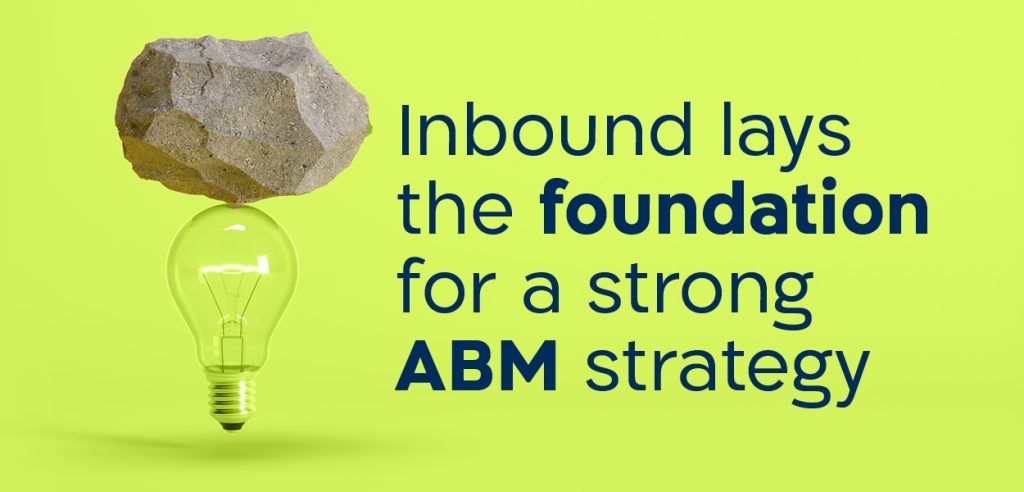
Inbound lays the foundation for a strong ABM strategy
According to HubSpot, inbound marketing helps you attract contacts associated with your target accounts. ABM accelerates the flywheel (the cyclical marketing funnel comprising attract, engage, and delight) so you can win and delight your target accounts by providing a standout customer experience. By using inbound, you’re able to carry out highly-targeted allocation of the most relevant resources to your high-value accounts. As a B2B marketer, by using this combined approach you can attract a broader group of prospects than you would if you were only using one method.Double up and deliver value
Your carefully crafted content has a two-for-one value. You can create and use content that serves both your ABM and inbound strategy. As an example, once you’ve created a personalized case study for a target account, you can also share on your website.Leverage account-based marketing tools
HubSpot’s ABM tool makes it easy to implement ABM and inbound strategies in a complementary way. Its CRM platform connects all of your sales and marketing data and allows enables customer-centric automation and personalization. It makes it easy to use data to segment and target your accounts and marketing automation to nurture your buyers or buying committee and hand over your leads to sales.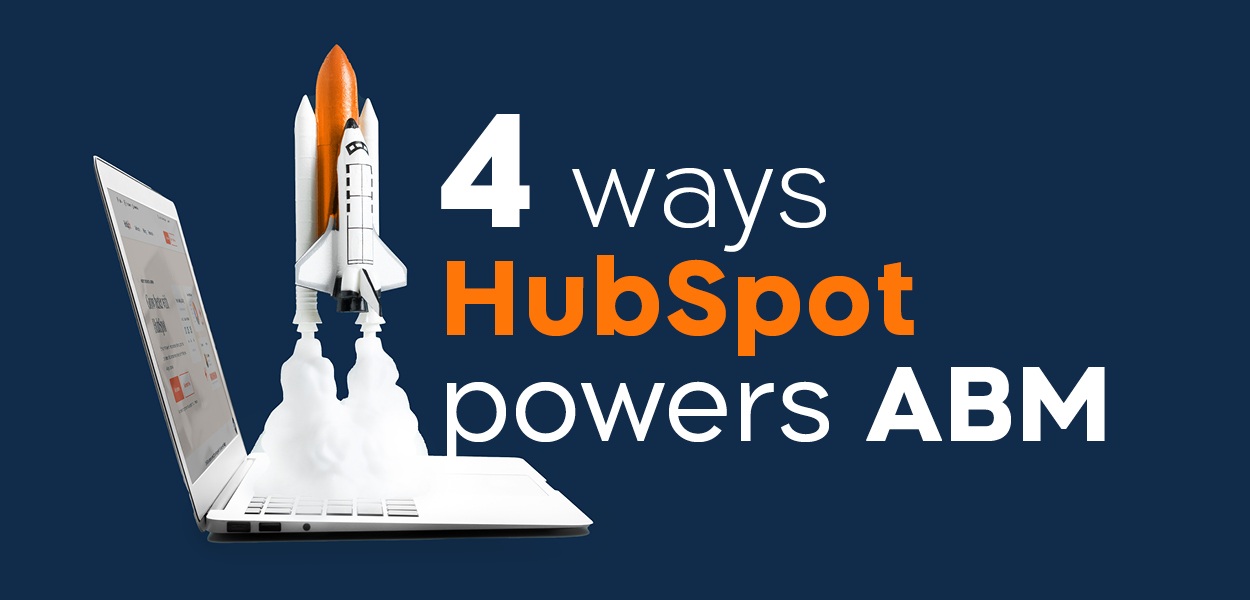 1. Set up ABM strategy quickly and smoothly
1. Set up ABM strategy quickly and smoothly
- Use workflow templates to define your ideal customer profiles and identify good-fit target accounts
- Set up default properties to tag accounts and buying roles
- Leverage AI-powered recommendations of target accounts
- Use shared tools that unite your teams around the same data in the same place
- Use the Target Accounts feature to obtain a bird’s eye view of progress across all target accounts
- Use Slack to support high-value target accounts, post KPIs, and share notes
- Personalize content and tailor how you engage with stakeholders within an account
- Use account-level targeting in LinkedIn Ads integration to target companies by account status or tier
- Deepen your relationships over time & build connections with stakeholders within each account
- Use the account overview feature to understand what’s happening at an account level
- Employ out-of-the-box ABM reporting dashboards to get a higher-level view
- Obtain a higher level view using company scoring to identify the highest value accounts and prioritize reachout
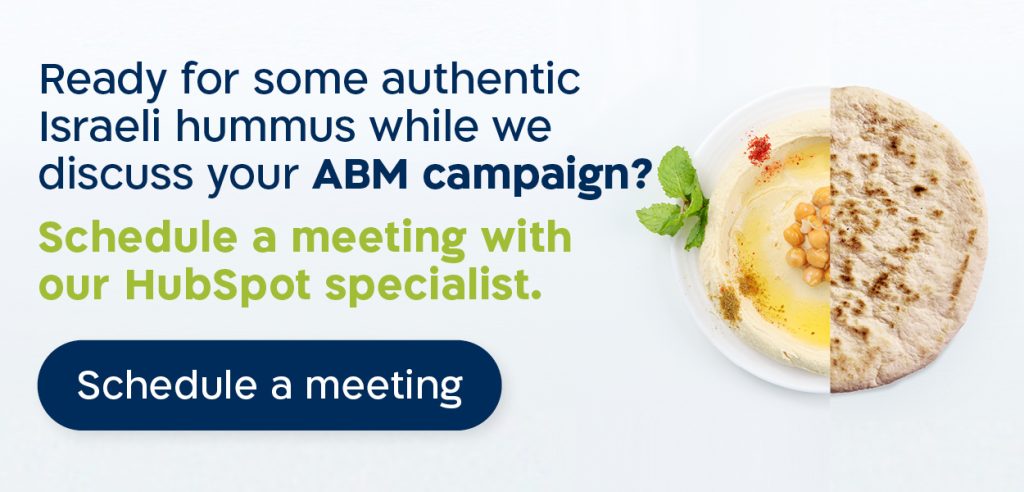
Spice up your SEO strategy with HubSpot
By
Liron Ramot
, 12/12/2023
Optimizing your website for search engines is crucial. Explore how HubSpot’s SEO Marketing Software simplifies the process. From SEO recommendations to content strategy creation and seamless integration, HubSpot streamlines your SEO efforts. Leverage its tools to define target audiences, research topics, and organize keywords.

How is your website ranked?
Google’s algorithm changes daily, but as a general rule of thumb, it ranks your website on three main factors: on-page SEO, off-page SEO, and technical SEO.- On-page SEO — covers three key areas:
- High-quality content (the heart of on-page SEO)
- HTML (source code including page titles, headers, meta descriptions, image alt-text, and more),
- and site architecture elements (such as page URLs, internal linking, and more).
- Off-page SEO — social sharing, external linking, and more.
- Technical SEO — structured data, site, speed and mobile readiness.
Don’t procrastinate, automate!
Why waste time, money and manual work when HubSpot SEO Marketing Software does it all for you? It can help you plan your SEO strategy, optimize your content, and measure ROI in three key steps:- Get SEO recommendations to optimize your site- Obtain recommendations ranked in order of priority which show which optimizations will have the biggest impact
- Create an optimized content strategy to build search authority- Obtain topic suggestions based on relevance, competition, and popularity and create high quality content around your core topics
- Integrate your SEO software with HubSpot’s content management tools- Obtain search keyword data, choose canonical URLs, get estimates on which topics will yield organic traffic gains, and track key topics on your dashboard
Get topical!
As the SEO project leader, you need to decide on each page’s target audience, goal, topic, and target keywords and phrases. HubSpot’s SEO tools make it easy to research and organize topics and subtopic keywords based on your company’s areas of expertise, which serve as the foundation for all the content you create for your website. Creating relevant and up-to-date content helps your website get indexed more accurately by search engines such as Google, which analyze keyword phrases in your content, title, meta description, hyperlinks, and more.Key tips to getting started with SEO
- Crawl your website, conduct an SEO audit, and define your site architecture.
- Establish a value proposition for every page and review and edit your content accordingly
- Target your audience for that specific page (if it differs according to market segment, application, or product category)
- Update your URLs, page titles, and meta descriptions.
- Making sure that your keyword/s are included in your URL and are used throughout the page
- Incorporate and optimize relevant visual content
- Add internal and external links
Why use HubSpot for SEO?
If haven’t yet made our case for why HubSpot takes the pain out of SEO and adds the gain, here are a few more good reasons to check it out: You don’t need to be an SEO expert, because its built-in SEO tools are built with marketers in mind. There’s no need to know coding either. HubSpot handles the technicalities, so you can focus on content. Here too, HubSpot has a variety of content planning tools built into the platform. It makes it really easy to connect your marketing assets so you can track the buyer’s journey — from awareness to qualified lead to happy customer.Driving results using Technical SEO Strategy | Case study
By
Orly Gilad
, 04/10/2023
In this in-depth case study, we delve into a real-world SEO project that serves as a testament to the remarkable impact a meticulously planned technical optimization strategy can have on a website's performance.
When the new client, an impressive player in the B2B Medical industry, first approached us, we were fully aware that this was a challenge requiring our utmost dedication. In the following case study, we'll walk you through the five pivotal steps we took to completely revamp their online presence, enhancing both page health and authority in the process - bringing an increase of 25% in traffic in just a few months.
Dive into our latest in-depth SEO case study and learn how Page Health and Authority Optimization can drive real-world results. See the transformative power of a meticulously planned technical SEO strategy.Client Background
Our client, a prominent B2B business, from the medical industry, approached us with a pressing concern: their website's underperformance. The objectives were clear - bolster online visibility, boost organic traffic, and, ultimately, amplify revenue streams. The website presented several challenges, including a distressingly low Page Health score of 48 and a less-than-optimal Page Authority of 17. The Analytics showed a high bounce rate and a low average time on the page.
The mission was unequivocal: transform these pivotal metrics to drive higher organic traffic and conversions by improving its metrics.
Challenges Faced
-
Low Page Health (Score 48): The website grappled with technical and on-page SEO issues that urgently required rectification.
-
Limited Page Authority (Score 17): The website's trustworthiness and credibility fell short, impeding its ascent in search engine rankings.
-
Stagnant Organic Traffic: Organic traffic had plateaued, failing to meet conversion rate expectations.
Strategy and Approach
1. Comprehensive Technical Audit
The first crucial step was an exhaustive technical audit.
This audit unearthed a multitude of issues, including a sluggish page load speed, poor mobile-friendliness, and crawlability impediments.
We also identified and rectified:
-
Broken links, which were harming user experience.
-
Duplicate content issues that led to search engine confusion.
-
Inadequate URL structures that hindered proper indexing.
Furthermore, addressing page speed was of paramount importance. Google's Core Web Vitals update places significant emphasis on page speed, and our efforts in this regard had a profound impact on website health.
2. In-Depth Keyword Research
Simultaneously, we embarked on an extensive keyword research expedition. Our goal was to identify high-impact keywords that resonated with both the client's objectives and current industry trends. This laid the foundation for a robust keyword strategy, ensuring that the content aligned perfectly with the target audience's intent.
3. On-Page Optimization
Optimizing existing content and crafting new, keyword-rich content was the next step. This involved:
-
Enhancing meta tags, crafting compelling headings, and optimizing image alt attributes to enhance visibility.
-
Leveraging schema markup to provide search engines with structured data, enhancing search results' richness.
4. Technical SEO Enhancements
Technical SEO enhancements played a pivotal role in improving website health:
-
We submitted updated sitemaps to search engines for expedited indexing.
-
Canonicalization issues were addressed to prevent duplicate content penalties.
-
An improved website navigation system and internal linking structure provided users with an enhanced experience.
5. Content Marketing and Link Building
The final piece of the puzzle was content marketing and link building:
-
Improving internal linkage between relevant content pieces within the website, which also improved time on site.
-
We created high-quality, shareable content to attract backlinks, thereby elevating Page Authority.
-
Employing ethical link-building strategies solidified the website's authority and trustworthiness.
Results Achieved
1. Page Health Transformation
Within a matter of months, our strategies propelled the Page Health score from 48 to an astounding 95. The resolution of technical issues, especially the optimization of page load speed, resulted in vastly improved overall website performance.
2. Page Authority Ascension
Page Authority, a key indicator of trustworthiness, surged from 17 to a highly commendable 29. The remarkable improvement was primarily attributed to the augmented backlink profile garnered through our content marketing and link-building endeavors.
3. Explosive Organic Traffic Growth
One of the most remarkable outcomes of our SEO campaign was the monumental 20% increase in organic traffic within just three months. Our meticulous efforts in addressing page speed and optimizing for Core Web Vitals played a substantial role in this growth.
4. Enhanced User Experience
By addressing technical issues and optimizing on-page elements, the website now delivers a seamless and engaging user experience. This has led to lower bounce rates and extended user sessions, cementing the site's position in search engine rankings.
Conclusion
This case study serves as a compelling testament to the power of a meticulously crafted SEO plan and precise technical optimization. The transformation of Page Health from 48 to an impressive 95 and Page Authority from 17 to 29 vividly illustrates the tangible benefits of strategic SEO efforts.
By systematically addressing technical issues, optimizing on-page elements, and implementing effective content marketing and link-building strategies, we achieved remarkable results. The client's online visibility, organic traffic, and conversion rates experienced substantial growth. This case study underscores the pivotal role of SEO in enhancing website performance and achieving substantial business growth.
In conclusion, for businesses aspiring to thrive in the digital sphere, investing in SEO is not just a choice; it's an imperative step toward realizing online success.
If you're seeking more detailed information on how optimizing page speed and eliminating duplicate content can enhance your website's health and drive remarkable traffic growth, visit us to read more: https://ozglobalb2b.com/SEO/
Ready to take your website's SEO to the next level? Book a meeting to schedule your consultation and unlock the full potential of your online presence.
How AI Powers Your Marketing & Sales Engine
By
Liron Ramot
, 03/10/2023
Ready to supercharge your inbound marketing game with AI? Say "Aye!" If you're a HubSpot user looking to boost your content creation and sales processes, we've got something exciting for you. Discover how AI can be your secret weapon! Curious to learn more? Click the link to unveil the full potential of HubSpot's AI tools and start revolutionizing your marketing strategy today.
If you’re already using HubSpot to fuel your inbound marketing strategy and drive sales, it’s time you took AI out for a spin
Constantly writing content to fuel your inbound marketing funnel can be time-consuming and costly. While ChatGPT isn’t going to replace your talented content team anytime soon (if at all), it can prove very useful in helping your team conduct research, generate content ideas, and write basic drafts for your team to finetune — so that you can generate more content, faster. It also helps your sales teams focus on closing deals instead of being bogged down by manual tasks. As a HubSpot user, it’s all your fingertips.Say goodbye to writer’s block
Having trouble generating the volume of content you need? Call on HubSpot’s friendly Content Assistant to create or refine web copy, blogs, articles, emails, and more. Using AI, you can generate ideas, outlines, or paragraphs for your required topics. You can also generate sales emails, titles and meta descriptions for pages and posts, and social posts. Simply answer the prompt, “What’s this social post about?” review the result, and tweak until you’re satisfied the post meets your standards. Not writing in English? Set the target language for the required content. Once a language is set, any generated text will automatically be output in that language.Four ways to tweak existing content
Using the “highlight” command, you can rewrite, expand, summarize, or change the tone of the text you’ve highlighted. It’s quick and efficient. Rewrite - Generates different wording for the highlighted text Expand - Elaborates on the content of the highlighted text Summarize - Condenses the highlighted text Change tone - Rewrites the highlighted text in the selected tone: friendly, professional, witty, heartfelt, or educational Beyond using the highlight command, you can also generate headings, paragraphs, and subsections based on your existing content. Clearly describe the content you require and select the required output. Remember to be very specific, use simple language, and provide examples to clarify the context and tone of your request. If at first you don’t succeed, try, try again. Experiment with different prompts until you get the output you need.Best practices for AI-generated content
- Always proofread and edit all your content before you publish it.
- Maintain your brand's voice and style – your tone of voice must be consistent through all marketing materials.
- It’s not all or nothing — remember to balance your AI-generated content with human-generated content.
- Check, check, and check again. While HubSpot has put security measures in place, content assistant may occasionally generate inaccurate, skewed, inappropriate, or misleading information. Make sure you verify the accuracy of the output's content, particularly any statistics or facts.
Streamline your daily sales workflow with ChatSpot.ai
Another great AI tool in the HubSpot toolbox is ChatSpot.ai, which helps your sales team save time and maximizes productivity by carrying numerous daily tasks. It can assist with lead management, adding contacts and companies to HubSpot’s CRM, including specific notes, assigning tasks, and sending reminders as well as personalized follow-up emails – all through simple chat-based commands. It quickly identifies prospects based on specific criteria (such as industry, location, and size) and provides a list of high-potential leads. It’s easy to create real-time custom reports on key metrics, including website visits, lead conversions, and revenue in an easily digestible format. It also aids with forecasting, listing the deals closing within a specific timeframe, the deal stage, as well as anticipated revenues. In short: It simplifies and streamlines your team’s daily workflow, cuts down on time-consuming manual tasks, and helps your sales team do more in less time. All those ready to start using AI, say “Aye!”What is Business to Employee (B2E) and how can it impact your company?
By
Guy Toledano
, 01/10/2023
Business-to-Employee, or B2E, refers to the strategies and technologies that companies use to support and engage their employees. B2E covers everything from attracting, recruiting, training, and onboarding employees, to providing self-service solutions and individualized access to essential tools or software.
 B2E strategies can also be used to support specific departments or teams within a company, such as sales teams that need flexible access to customer information and sales tools. For example, a B2E portal might include a CRM system that allows sales reps to easily access customer data, create and track leads, and manage their sales pipeline.
There are many benefits to implementing a B2E strategy, including improved communication and collaboration, increased efficiency and productivity, and cost savings. By providing employees with the tools and resources they need to succeed, companies can create a more engaged and motivated workforce that is better equipped to meet the challenges of today's business environment.
Have a question? Want to learn more? Don’t hesitate to reach out!
B2E strategies can also be used to support specific departments or teams within a company, such as sales teams that need flexible access to customer information and sales tools. For example, a B2E portal might include a CRM system that allows sales reps to easily access customer data, create and track leads, and manage their sales pipeline.
There are many benefits to implementing a B2E strategy, including improved communication and collaboration, increased efficiency and productivity, and cost savings. By providing employees with the tools and resources they need to succeed, companies can create a more engaged and motivated workforce that is better equipped to meet the challenges of today's business environment.
Have a question? Want to learn more? Don’t hesitate to reach out!

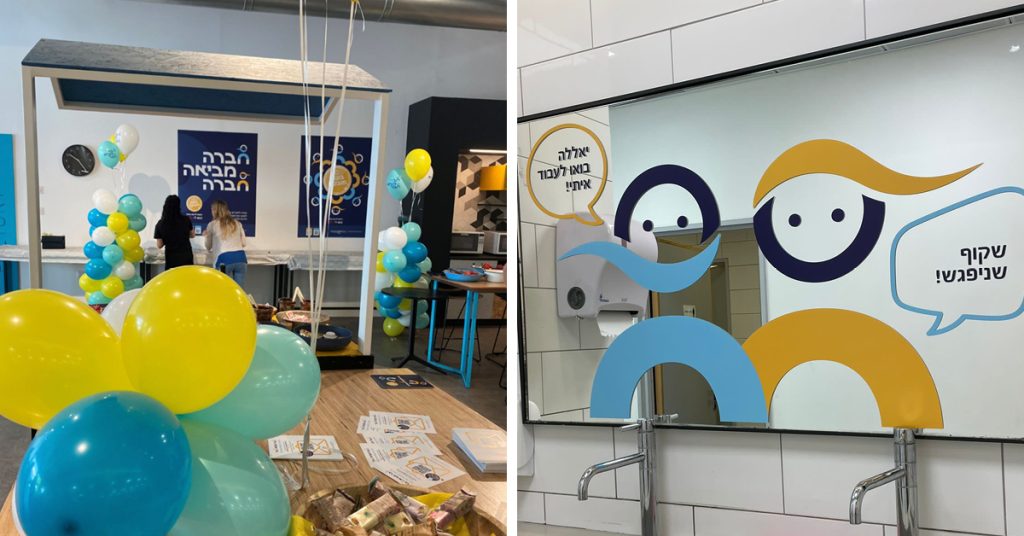
Maytronics - OZ Global B2B
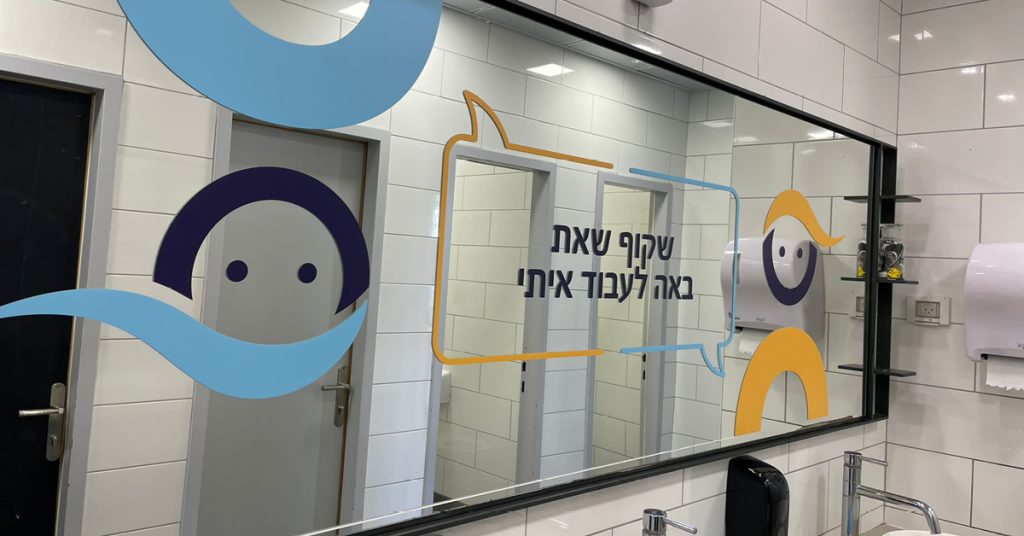

Account Based Marketing (ABM) Vs. Lead Generation
By
Guy Toledano
, 17/08/2023
Are you struggling to decide between account-based marketing (ABM) and Lead Generation for your business? In this blog, we explore the key differences between the two strategies and how they can be used together to achieve optimal results. From understanding the benefits of demand generation to utilizing ABM for "land and expand" tactics. This guide provides valuable insights for marketers looking to boost their ROI. Additionally, the blog discusses how to effectively target the two main types of LinkedIn users to generate leads and increase engagement.
 While ABM and demand generation may seem like competing strategies, they can actually be used together to achieve optimal results. For example, demand generation can be used to create awareness and interest in a product or service, while ABM can be used to generate qualified leads and sign-up new customers.
This marketing tactic, can start with a broad-based demand generation campaign to create awareness, which will help to identify targeted leads or target market segments, which can then be used to inform a more targeted ABM campaign. An ABM activity can be used to reach out to specific named accounts with personalized content. These combined activities allow marketers to use both strategies to accelerate the buyer's journey and assist with selling.
It's also important to note that while ABM and demand generation are both outbound marketing strategies, inbound demand generation is also possible. By using inbound marketing tactics such as content marketing, SEO and other digital marketing strategies, you can drive leads and customers to your website and then use ABM to engage with them.
While ABM and demand generation may seem like competing strategies, they can actually be used together to achieve optimal results. For example, demand generation can be used to create awareness and interest in a product or service, while ABM can be used to generate qualified leads and sign-up new customers.
This marketing tactic, can start with a broad-based demand generation campaign to create awareness, which will help to identify targeted leads or target market segments, which can then be used to inform a more targeted ABM campaign. An ABM activity can be used to reach out to specific named accounts with personalized content. These combined activities allow marketers to use both strategies to accelerate the buyer's journey and assist with selling.
It's also important to note that while ABM and demand generation are both outbound marketing strategies, inbound demand generation is also possible. By using inbound marketing tactics such as content marketing, SEO and other digital marketing strategies, you can drive leads and customers to your website and then use ABM to engage with them.
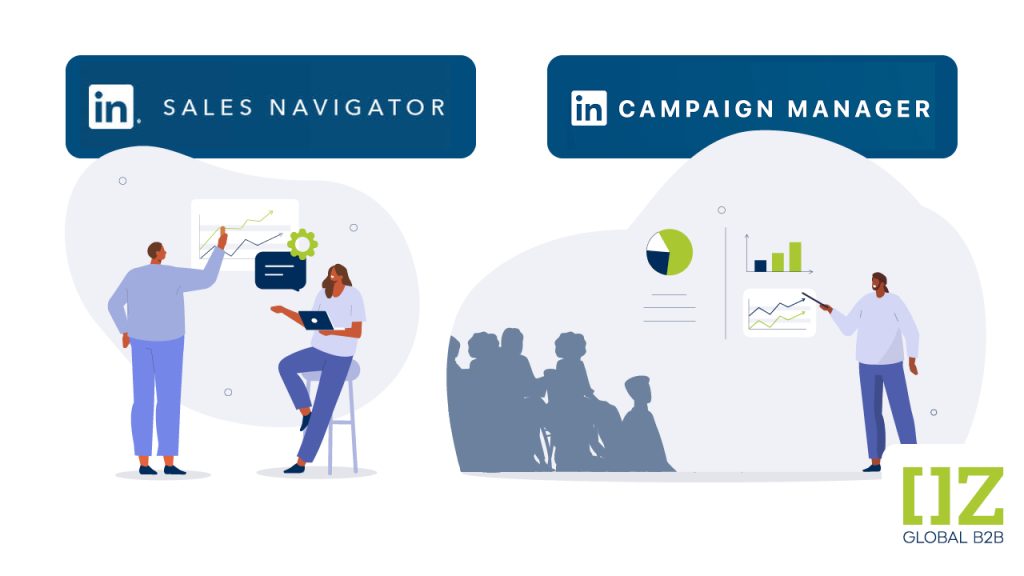 On LinkedIn, there are two primary types of users. The first group is known as "active users" and they exhibit a high level of engagement on the platform, such as performing searches, interacting with content, and sharing posts. These users also typically stay on top of their inbox and respond to relevant messages. These active users can be effectively targeted through an awareness campaign, followed by account-based marketing efforts.
The second main group of LinkedIn users are referred to as "basic users." These users tend to have a more limited level of activity on the platform, mostly just scrolling through their feed. They are less likely to respond to private messages. These basic users can be targeted through professional lead generation campaigns that will catch their attention while they are scrolling through their feed, with the use of an appealing message and creative content.
It is important to note that there are other types of users who fall somewhere between active and basic user, and by combining efforts of ABM with lead generation it will help in effectively reaching out to all types of users, with the right format and message.
In conclusion, account-based marketing and lead generation are both powerful strategies for generating revenue and boosting ROI. While they have their own unique benefits, it's important to understand how they can be used together to achieve optimal results. By using a targeted ABM approach in conjunction with a broad-based demand generation campaign, marketers can achieve their pipeline and revenue goals by capturing the attention of the right accounts and signing up new customers.
For more info and questions contact us.
On LinkedIn, there are two primary types of users. The first group is known as "active users" and they exhibit a high level of engagement on the platform, such as performing searches, interacting with content, and sharing posts. These users also typically stay on top of their inbox and respond to relevant messages. These active users can be effectively targeted through an awareness campaign, followed by account-based marketing efforts.
The second main group of LinkedIn users are referred to as "basic users." These users tend to have a more limited level of activity on the platform, mostly just scrolling through their feed. They are less likely to respond to private messages. These basic users can be targeted through professional lead generation campaigns that will catch their attention while they are scrolling through their feed, with the use of an appealing message and creative content.
It is important to note that there are other types of users who fall somewhere between active and basic user, and by combining efforts of ABM with lead generation it will help in effectively reaching out to all types of users, with the right format and message.
In conclusion, account-based marketing and lead generation are both powerful strategies for generating revenue and boosting ROI. While they have their own unique benefits, it's important to understand how they can be used together to achieve optimal results. By using a targeted ABM approach in conjunction with a broad-based demand generation campaign, marketers can achieve their pipeline and revenue goals by capturing the attention of the right accounts and signing up new customers.
For more info and questions contact us.
HubSpot – Marketing, ROI, and everything in between
Speaker: Dor Rotschild
Hebrew Webinar - marketing managers and sales managers who want to know what really happens in the connection between the marketing and sales processes in your company, and how the connection contributes to ROI and results.
Move over Google Analytics, GA4 is coming to your website soon
By
Orly Gilad
, 17/05/2023
You’re probably familiar with Universal Analytics, the Google Analytics (GA) tool that has been around for more than a decade, providing website owners and publishers with insights into their website’s performance. But in July 2023, it’s being replaced by GA4. Are you ready for the switch?
Don’t say you didn’t see it coming
In October 2020, Google announced that it would discontinue Universal Analytics and shift to Google Analytics 4 (GA4). But don’t worry, we’ve got you covered with our step-by-step guide on how to switch from Universal Analytics to GA4, discuss the differences between these two versions of GA, and highlight some of the benefits of GA4.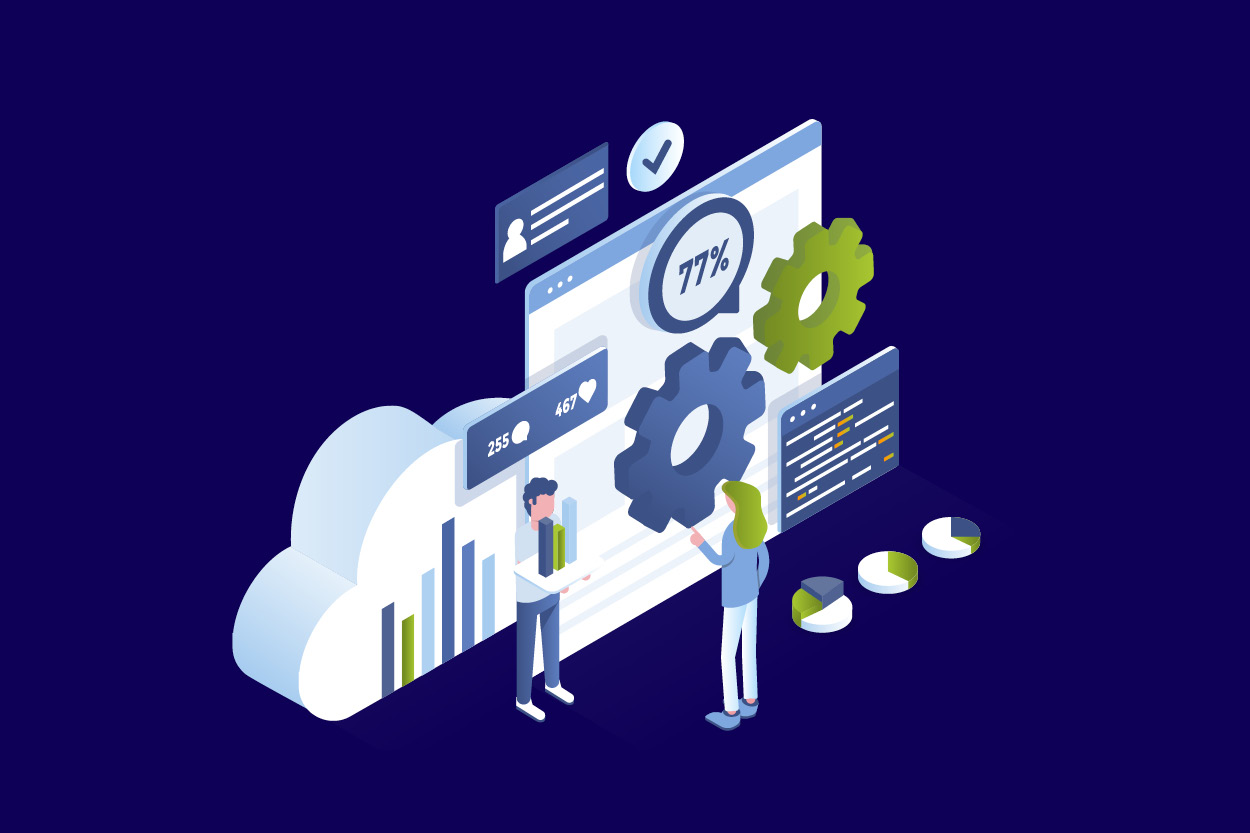
The clock is ticking
From July 2023, the free version of GA will no longer gather data. That means if you want to continue using Google Analytics, you must switch to GA4. Take note, you will be able to access your previously processed data in your Universal Analytics property for at least six months. However, you won’t be able to view your Universal Analytics reports or interact with your analytics data via the API. This change will affect all website owners who rely on their Google Analytics account as their main data source for audience demographics, behavior, and areas of interest.What’s the difference between Google Analytics and GA4?
If you want to know how your users are interacting with your website or app, you need effective event tracking which allows you to track specific user interactions – such as button clicks, video plays, and form submissions. In the past, you needed to set it up manually, adding code snippets to your website or app to track specific events, which was challenging to manage. The good news is that G4 has already set it up for you and you can configure event tracking without coding. While the focus used to be on calculating site sessions and monitoring audiences, it’s now moved to what audiences are actually doing on your site. GA4 offers parameters, enhanced measurement, and in-platform event creation (replacing action, category, and label). When setting up the data stream, you can turn on enhanced measurement to automatically collect page views, downloads, outbound clicks, video engagement, and scrolls. Conditions and parameters (which provide context on the user or user actions) cover events that don’t fall under enhanced measurement. Take note that you can mark events as conversions which eliminate the need for goal setup.There are four types of events covered in GA4:
Automatically collected events GA4 automatically collects pageviews, scrolls, and outbound clicks without the need for additional coding.
Enhanced measurement events
Here’s where things get a bit more complex. These events usually track interactions such as page views, file downloads, form interactions, scrolls, outbound clicks, site search, and video engagement that can’t be easily by standard events and require extra coding before GA4 can collect these events and provide reports.Recommended events
Behind the scenes, GA4 gathers data on your site activity and makes recommendations on events you may want to consider tracking, such as frequent outbound link clicks.
New G44 features
- Link to Google Merchant Center, Google Optimize, and BigQuery natively and for free
- Create custom reports in GA4 and add those reports right to your navigation
- Custom dashboards combining two tools in one —taking the data from UA and Data Studio
Gee, four sounds great!
Switching to GA4 allows you to take advantage of all the new advanced features and get the most out of your data. There isn’t much time left to make the move, so if you haven’t already started, it’s time to make the switch now. Ready to make the switch? Our SEO team will walk you through it.It’s not you, it’s Google!
By
Orly Gilad
, 02/05/2023
Did Your Search Engine Rankings Drop Suddenly? It’s Not You, it’s Google! When you’ve worked hard to get your website ranking high in Google’s results, it can be disturbing when they experience a sudden drop. We’d tell you not to panic, but it doesn’t really work. Actually, if you see other webmasters panicking, chances are you should be too.
 A good place to start is the Google Search Console. You’ll find that it’s a valuable tool for tracking and optimizing your website's rankings in Google search results. Take a look at your analytics and check your manual action report.
Making major changes to your site may have an impact on your rankings. Take a look at your website traffic to see if there are any noticeable changes or trends. Reviewing your site statistics may provide some useful data and actionable insights.
By leveraging the information provided by the console, you can make informed decisions and implement effective strategies to improve your website's performance and rankings.
A good place to start is the Google Search Console. You’ll find that it’s a valuable tool for tracking and optimizing your website's rankings in Google search results. Take a look at your analytics and check your manual action report.
Making major changes to your site may have an impact on your rankings. Take a look at your website traffic to see if there are any noticeable changes or trends. Reviewing your site statistics may provide some useful data and actionable insights.
By leveraging the information provided by the console, you can make informed decisions and implement effective strategies to improve your website's performance and rankings.
It’s not you? It could be Google
Google makes updates every single day, a couple of times a day. A Google update in February caused a lot of volatility. Here’s the bad news: experts say Google’s volatility will continue to intensify. Tools such as Semrush Sensor can help with assessing SERP volatility. Remember, SEO is an ongoing process, so ranking fluctuations are inevitable. By monitoring, analyzing, and optimizing your website's performance regularly, you can improve your rankings and drive more targeted organic traffic to your website over time.To stay informed of the up and downs, follow Google Search Status updates, or SEO news sites and blogs.
Consumerize the Customer Journey
By
Nirit Elyovich, MBA
, 25/01/2022
Early in my career, a wise woman said customers pay my salary, not owners. It's vital for marketers to consider future customers' needs.
The new B2B customer is a digital native
Our childhood determines our future behaviors as adults, the people we become, and the decision-makers we grow up to be. It is also true of the technological environment in which we were raised.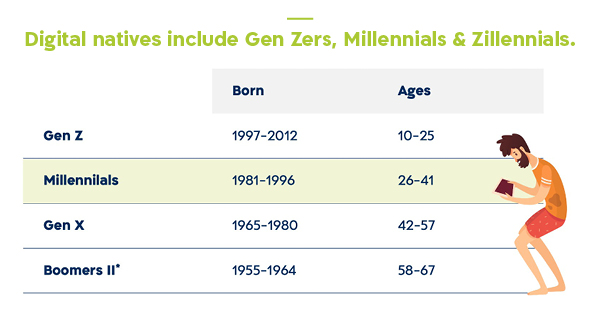 The millennials, also known as Generation Y, were born after 1980. They are now in their 30’s. Generation Z, as you can see in the table, is still young, but we will soon see them influencing our businesses. Since technology is changing very quickly, a sub-generation was born between the Millennials and Generation Z. Zillennials were born between ‘93-‘98 and were influenced by more advanced technology than the Millennials.
For their entire lives, digital natives have been surrounded by technology, social media, mobile devices, computers, and the internet. They speak this digital language as their mother tongue. They did not learn this language in their 20’s, 30’s, or later. They do not have an accent, so to speak.
The millennials, also known as Generation Y, were born after 1980. They are now in their 30’s. Generation Z, as you can see in the table, is still young, but we will soon see them influencing our businesses. Since technology is changing very quickly, a sub-generation was born between the Millennials and Generation Z. Zillennials were born between ‘93-‘98 and were influenced by more advanced technology than the Millennials.
For their entire lives, digital natives have been surrounded by technology, social media, mobile devices, computers, and the internet. They speak this digital language as their mother tongue. They did not learn this language in their 20’s, 30’s, or later. They do not have an accent, so to speak.
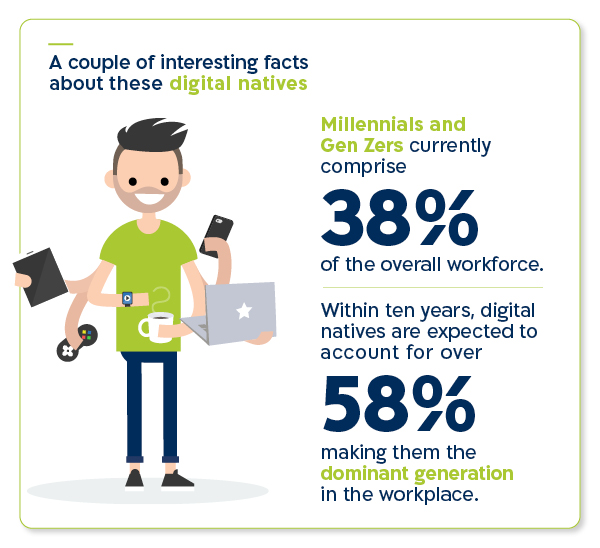
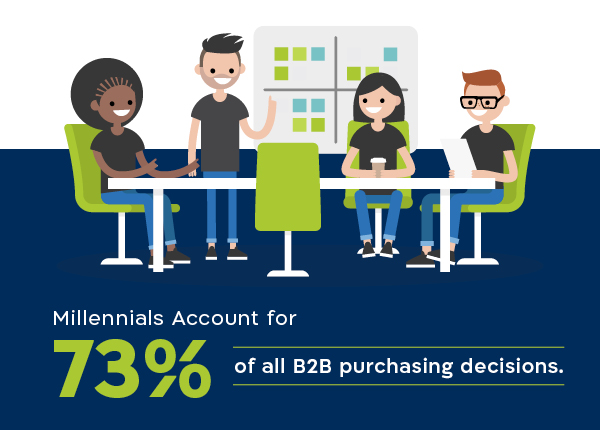 This impressive figure tells the whole story: More and more millennials and gen zers are entering the B2B decision journey, some as technological or professional influencers and others as decision-makers. It is important to note that among the people involved in decision-making, you usually meet several generations.
A few months ago, we at Oz Global B2B did a project for the American agricultural market. The intergenerational integration in the decision-making process that arose there was very prominent.
This impressive figure tells the whole story: More and more millennials and gen zers are entering the B2B decision journey, some as technological or professional influencers and others as decision-makers. It is important to note that among the people involved in decision-making, you usually meet several generations.
A few months ago, we at Oz Global B2B did a project for the American agricultural market. The intergenerational integration in the decision-making process that arose there was very prominent.
-
- A family business where the younger generation initiates a decision, and the founding generation approves it. Sometimes the founder initiates the decision but immediately passes it on to the younger generation to check online what the options are.
- A senior manager at a big business closes a deal, but the people in the field - professionals or salespeople - do not “speak” the same language. This will greatly affect the next purchase.
The Millennials and Gen Zers highly influence who will enter the decision funnel
About 50% of all product searches on the web are conducted by digital natives. The customer journey is long, complex, and involves many stakeholders.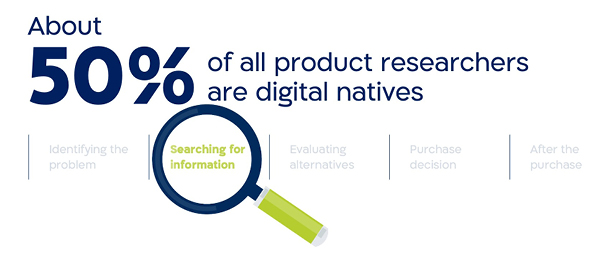 By the time the customer recognizes that he has a problem, we are, in most cases, not there. Identification is an internal stage from which someone is appointed to start researching information to find options for a solution.
50% of those who conduct the research and seek alternatives regarding a product or service, may not take an "official" part in decision-making but are the ones who put the relevant suppliers in the decision-making funnel. They are the ones who build the long list. They are the ones who decide whether or not you will be included in the “consideration group,” which is of critical importance.
By the time the customer recognizes that he has a problem, we are, in most cases, not there. Identification is an internal stage from which someone is appointed to start researching information to find options for a solution.
50% of those who conduct the research and seek alternatives regarding a product or service, may not take an "official" part in decision-making but are the ones who put the relevant suppliers in the decision-making funnel. They are the ones who build the long list. They are the ones who decide whether or not you will be included in the “consideration group,” which is of critical importance.
Two tips to gain the trust of digital natives:
1. Be authentic!
The generation that grew up on social networks, fake news, and unfounded marketing does not believe in marketing messages and does not believe in unproven statements. They have developed a hypersensitivity to online messages - they suffer from a blatant lack of trust in what is being said online. They continue to consume information online, but with a very large firewall. The bright side of it is that digital natives recognize authenticity when they see it..So what does authentic marketing look like?
-
- Get your executives to use social media Customers want to know the people behind the executives or the company representatives that they are in contact with.Make sure your site reveals who you are beyond your formal title. What topics do you choose to share? Who are your friends, what groups do you belong to, and to whom do you respond to?LinkedIn is not everything. Feel free to diversify to other social networks - Facebook, Instagram, Twitter, and even Tik Tok.
- Share user-generated content from real people Show real things, with real customers behind them. If you trust your product, let it tell your story.
- Go live on social media platforms Talk without filters. To digital natives this sounds obvious, to digital immigrants, it is less trivial. At first, the digital immigrants posted posts after editing them numerous times. Then they agreed to post an edited video. The transition to live video is scarier, but this is exactly the meaning of authenticity.
- Promote employee advocacy Empower your employees to share smart, quality content with their own social networks. On average, employee networks have 10x more connections than a company has followers. Plus, according to the Edelman Trust Barometer, people are 3x more likely to trust company information shared by an employee than that shared by a CEO.
2. Consumerize!
This word does not exist in the dictionary yet but already stars in the literature that follows trends in the B2B world. As Mona Akmal, Falkon CEO and Cofounder, once said, “As work and life flexibly intertwine, so must our approach to reaching our target users.” Gone are the days when the customer was a business person between 9-17 and a consumer on evenings and weekends. Studies show that the business customer is very much influenced by his consumer experience and expects to have a similar experience in business purchases. The customer experience touches on all stages of the journey - collecting information, placing an order, contacting the company up to paying.- More than 80% of B2B customers stated that they will look for a new supplier if their expectations in terms of customer service and user experience are not fulfilled.
- According to McKinsey & Co, B2B brands score below 50% on customer experience index ratings on average, compared to 65 to 85% for typical B2C brands.
- Gartner illustrates that 77% of B2B buyers report that their last purchase was very difficult or complex.
To sum up…
- The digital natives are digital animals. They were born into it, and it is their playground. It requires us to be present and comfortable in the digital space. Allow them to find us easily and learn about us in a convenient way that interests them. Allow them to easily consult, purchase and pay online.
- Life in the digital arena has taught them to be suspicious, not to believe everything they are told. They have developed the skills and expertise to recognize fake news when they see it. This requires us to be authentic in interactions with them, without filters and edits.
- Remember, before they are decision-makers, customers, or partners, they are first and foremost human beings. Their personal lives have seeped into their business life and it is very difficult for them to separate the two. So, we have no choice but to "consumerize" the way we treat them.
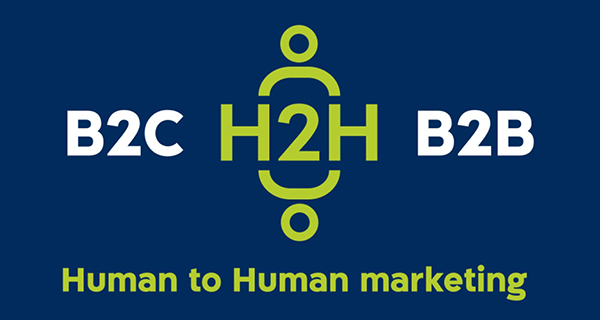
10, 9, 8…. And counting down marketing trends for 2018
By
Orit Oz
, 18/01/2018
The New Year is here and we put together a countdown of marketing trends that will affect B2B brands in 2018!
10 – Visual content
 The trend for visualization through video, images and infographics will get stronger. In fact, predictions indicate that by 2019, video will account for 80% of consumer internet traffic. And, according to Facebook, live is even better and live video gets 3x more views and is expected to dramatically increase in 2017. B2B brands can use live videos in lots of different ways, including at events to give followers a behind-the-scenes look, host interviews with key influencers, and launch promotions.
The trend for visualization through video, images and infographics will get stronger. In fact, predictions indicate that by 2019, video will account for 80% of consumer internet traffic. And, according to Facebook, live is even better and live video gets 3x more views and is expected to dramatically increase in 2017. B2B brands can use live videos in lots of different ways, including at events to give followers a behind-the-scenes look, host interviews with key influencers, and launch promotions.
9 – Big (big) data
 Big data’s been a big trend for many years now, but it’s become more accessible because of machine learning and AI. As more and more platforms and marketing methods start incorporating big data, the use of big data is becoming an essential part of marketing and understanding what the consumer wants and when is worth its weight in gold.
Big data’s been a big trend for many years now, but it’s become more accessible because of machine learning and AI. As more and more platforms and marketing methods start incorporating big data, the use of big data is becoming an essential part of marketing and understanding what the consumer wants and when is worth its weight in gold.
8 – Authenticity
 Transparency and trust have become a major component of the customer’s decision-making process as customers’ become less and less tolerant towards fake news and reviews, or in other words, exaggerated marketing. Brands should invest in community management to keep the online community engaged, informed and happy; and can use technology advances such as virtual reality (VR) and augmented reality (AR) to connect with users on a deeper, more emotional level.
Transparency and trust have become a major component of the customer’s decision-making process as customers’ become less and less tolerant towards fake news and reviews, or in other words, exaggerated marketing. Brands should invest in community management to keep the online community engaged, informed and happy; and can use technology advances such as virtual reality (VR) and augmented reality (AR) to connect with users on a deeper, more emotional level.
7 – Content and influencer networks
 There is no arguing with the fact that content is still king. However, there is a need to deal with the challenge of oversaturation. Now that most brands have some sort of content strategy and social media networks are full of content, the focus needs to shift slightly. Rather than fighting for more visibility, marketers will need to think out of the box and stand out in space that is already taken. This is where influencers come into the picture. By leveraging the networks of influencers who already have a “captive” audience, marketers can increase their online influence and start to reduce the volume of content produced, or in other words, go for quality and not quantity.
There is no arguing with the fact that content is still king. However, there is a need to deal with the challenge of oversaturation. Now that most brands have some sort of content strategy and social media networks are full of content, the focus needs to shift slightly. Rather than fighting for more visibility, marketers will need to think out of the box and stand out in space that is already taken. This is where influencers come into the picture. By leveraging the networks of influencers who already have a “captive” audience, marketers can increase their online influence and start to reduce the volume of content produced, or in other words, go for quality and not quantity.
6 – Shift of focus from millennials to Generation Z
 Born between 1995 and 2010, this consumer group marks a substantial shift that will affect all brands. These digital natives are different from millennials and they will have increased buying power in the near future. Keep an eye out on key platforms such as Snapchat and Instagram when targeting this young and highly dynamic demographic.
Born between 1995 and 2010, this consumer group marks a substantial shift that will affect all brands. These digital natives are different from millennials and they will have increased buying power in the near future. Keep an eye out on key platforms such as Snapchat and Instagram when targeting this young and highly dynamic demographic.
5 – Mobile, mobile, mobile
 We cannot emphasize this one enough. Consumers are spending most of their time on their mobile phones. In fact, in 2018, mobile video consumption is expected to grow by 25% and ad spending on mobile video will reach 18 billion dollars next year, surpassing desktop. Even Google has even given priority to pages that are AMP optimized (Accelerated Mobile Pages). So the bottom line is that if you haven’t yet done so, you need to start optimizing your marketing strategies, websites and ads for mobile.
We cannot emphasize this one enough. Consumers are spending most of their time on their mobile phones. In fact, in 2018, mobile video consumption is expected to grow by 25% and ad spending on mobile video will reach 18 billion dollars next year, surpassing desktop. Even Google has even given priority to pages that are AMP optimized (Accelerated Mobile Pages). So the bottom line is that if you haven’t yet done so, you need to start optimizing your marketing strategies, websites and ads for mobile.
4 – Shift in KPIs
 While it’s still important to know how many people visited your site and from where, at the end of the day it’s all about sales. For this reason, it’s important to track conversions and revenue, in other words, who buys and at what stage of the buyer’s journey. In this way, it becomes easier to track your return of investment on digital marketing.
While it’s still important to know how many people visited your site and from where, at the end of the day it’s all about sales. For this reason, it’s important to track conversions and revenue, in other words, who buys and at what stage of the buyer’s journey. In this way, it becomes easier to track your return of investment on digital marketing.
3 – Data protection
 The digital age brings with it the need to take multiple aspects including data privacy into account. In May 2018, the General Data Protection Regulation (GDPR) will take affect with the aim of improving protection for EU citizens and adapting privacy and data laws to the digital age. This will require marketers to think and act very differently as it will affecter multiple factors in a marketer’s focus, some of which require organizations to start preparing immediately.
The digital age brings with it the need to take multiple aspects including data privacy into account. In May 2018, the General Data Protection Regulation (GDPR) will take affect with the aim of improving protection for EU citizens and adapting privacy and data laws to the digital age. This will require marketers to think and act very differently as it will affecter multiple factors in a marketer’s focus, some of which require organizations to start preparing immediately.
2 – Native ads and smart content
 Native advertising is expected to drive more than 74 percent of all add revenue by 2021. Because of their more natural placement and format, these ads usually get more exposure and engagement than traditional banner ads. However, these ads need to be written according to the preferences of those seeing the ads, and they should also be linked to “smart content” that is adapted to audiences based on NI, cookies and an in-depth understanding of target audiences.
Native advertising is expected to drive more than 74 percent of all add revenue by 2021. Because of their more natural placement and format, these ads usually get more exposure and engagement than traditional banner ads. However, these ads need to be written according to the preferences of those seeing the ads, and they should also be linked to “smart content” that is adapted to audiences based on NI, cookies and an in-depth understanding of target audiences.
1 – Take advantage of the FOMO effect
 Even though we already mentioned this one in a previous point, we think it deserves to be repeated for emphasis. As more and more people experience the FOMO (Fear of Missing Out) effect, marketers need to create unique and original content that makes potential customers feel like they’re the first to know. For example, content that involves a “behind-the-scenes look”, an exclusive with an influencer, or a sneak preview of upcoming projects and product launches can be used to really create a buzz and get potential consumers to engage “before” anyone else does.
Even though we already mentioned this one in a previous point, we think it deserves to be repeated for emphasis. As more and more people experience the FOMO (Fear of Missing Out) effect, marketers need to create unique and original content that makes potential customers feel like they’re the first to know. For example, content that involves a “behind-the-scenes look”, an exclusive with an influencer, or a sneak preview of upcoming projects and product launches can be used to really create a buzz and get potential consumers to engage “before” anyone else does.
Moo-ving it up a notch with user experience
By
Miri Peled
, 10/10/2017
To encourage Afimilk’s dealers to make more purchases online and to give them access to marketing materials, OZ designed an intuitive online partner portal.
Afimilk case study: partner portal
In the world of B2B, it’s really important to nurture partner relationships and find ways to make it easier for our partners and distributors to satisfy the needs of their (and our) end customers. In this manner, you can create a win-win situation where both your customers (distributors) are happy and their customers (end users) are happy with your brand. Recently, as part of our ongoing services for Afimilk – a global leader in advanced dairy management technology solutions – we created a unique and creative solution for its partners. With the goal of encouraging Afimilk’s dealers to make more purchases online and give them easy access to marketing materials, we designed an integrated and intuitive online partner portal. This portal provides end-to-end marketing and sales support, and an easy-to-use online ordering system. It includes three valuable tools that are also integrated with Afimilk’s ERP system:- Knowledge center – with marketing resources including brochures, presentations, and supporting materials to help dealers promote Afimilk solutions.
- Configurator wizard – builds price quotations tailored to customer requirements while promoting Afimilk’s preferred solutions.
- Market gate – intuitive online ordering system tailored for Afimilk partners to encourage online ordering.
Moving to a business-to-business-to-user mindset (B2B2U©)
By
Dina Gidron
, 10/09/2017
Communicate with both intermediary customers and patient-consumers in this new age of healthcare by transitioning to a Business-to-Business-to User model.
It’s all about the people and building relationships
By
Miri Peled
, 09/08/2017
We worked together to develop a new visual identity that stands out in the global market and is also centered around Trendlines’ two foundational principles.
It’s about the people AND building relationships
Because Trendlines Group’s hands-on investment approach and commitment to improve the human condition through innovation are inseparable parts of the company's character, the refreshed visual identity rests strongly on these principles. The result – a new compelling brand and visual identity – was launched at Trendlines’ 7th Annual Trendlines Company Showcase attended by hundreds of biomedicine industry professionals from around the world, and sponsored by companies worldwide.Inbound for Medical & Healthcare Companies Event
By
Miri Peled
, 23/07/2017
We held an Inbound for Medical & Healthcare Companies event where industry experts shared multiple insights on marketing for medical and healthcare industries.
- Matt Brown, HubSpot Specialist from Boston – US Trends in Healthcare Marketing
- Dina Gidron, VP Strategy at OZ – Opening New Channels of Communication
- Mickey Nave, Corporate Marketing Director at Lumenis – Medical marketing: generating leads that your sales team will love
- Bat-chen Grinberg, Founder of MC Forum – Digital tools that reduce your work overload
- The age of “Social Health”. The combination of healthcare reforms, the age of consumerism and mobile technology is creating the perfect climate for change in healthcare.
- We see YOU, we know YOU, we understand YOU, we want to help YOU. The digital revolution is transforming the way we do business as we shift from a Business-to-Business (B2B) to a Business-to-Business-to-User (B2B2U©).
- Patient-consumers are the center of the universe. As patient-consumers become the single most important factor in this new era, we need to open up direct channels of communication with them to understand their challenges, increase brand awareness and create bottom-up demand.
- Trends in medical and healthcare. Patient-consumers are avid researchers; marketers are targeting patient-consumers AND payers; digital channels are overtaking traditional marketing channels; and digital content is key to the decision process.
- Brands must recognize social health and deliver value across the full spectrum to drive leads, convert prospects to customers and keep them loyal.
- Inbound marketing and content marketing are well-suited to the medical and healthcare industry as it promotes targeted communication, trust-based decision-making, long-term relationships, and thought leadership and industry expertise.
Getting to know your patient-consumers
By
Orit Oz
, 13/07/2017
When I just started my career, an intelligent woman told me that only when I understand.
Preparing for the age of “Social Health”
As healthcare reforms, the era of consumerism and mobile technology create the ideal climate for positive change in the medical and healthcare arena, we’re ushering in a new age – the “Social Health” era. As we transition into this new era, patient-consumers are becoming the single most important factor in the medical and healthcare eco-system; and as they research and shop online for medical services, products and insurance plans, the medical & healthcare industry increasingly resembles a retail industry. The impact of this shift on medical and healthcare providers is huge as it means they need to open up direct channels of communication with patient-consumers to understand their challenges and offer services and products with real value. Or in other words, there is a need to move from a Business-to-Business (B2B) to a Business-to-Business-to-User (B2B2U©) approach. As we enter this age of “Social Health”, brands need to recognize the need to deliver value across the full spectrum to drive leads, convert prospects to customers and keep them loyal.
As we enter this age of “Social Health”, brands need to recognize the need to deliver value across the full spectrum to drive leads, convert prospects to customers and keep them loyal.
What’s the difference between traditional and inbound marketing?
By
Miri Peled
, 29/06/2017
Inbound marketing focuses on attracting customers through valuable content, while traditional marketing is marketer-centric and uses more interruptive methods.
It's time to attract your prospects instead of bombarding them.
Inbound marketing is a customer-centric approach that focuses on attracting customers to your business through content and interactions that are valuable, helpful, and trust-building.It’s all about using remarkable content to develop and nurture long-term relationships with your prospects so they ultimately build trust in your brand.
In comparison, traditional marketing, which is marketer-centric, uses more interruptive methods to vie for the attention of prospects.| Inbound | VS. | Outbound | |
| Definition | Inbound marketing uses customer-centric tactics to attract prospects, address their challenges and goals, and build trust in your business | Traditional marketing uses more interruptive methods to push products and services and get the attention of prospects | |
| Communication | Based on interactive communication that engages prospects and attracts them to you | Based on one-way, outward communication | |
| Tools/techniques | Educational content such as blogs, videos, eBooks, white papers, SEO, and case studies | Print and TV ads, banner ads, direct mail, cold calling, and mass email campaigns | |
| Goals | Offer prospects value through educational content and earn their trust | Drive sales through product-centric marketing |






















